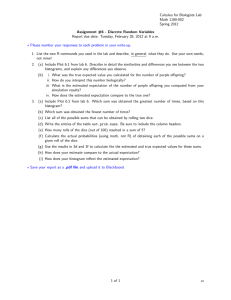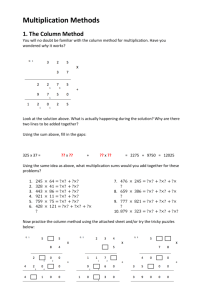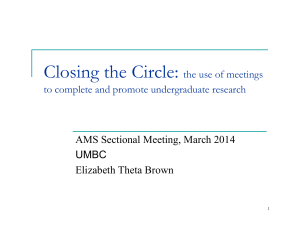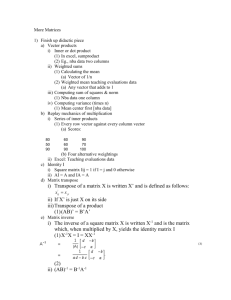Sum Up - CMC - California Mathematics Council
advertisement
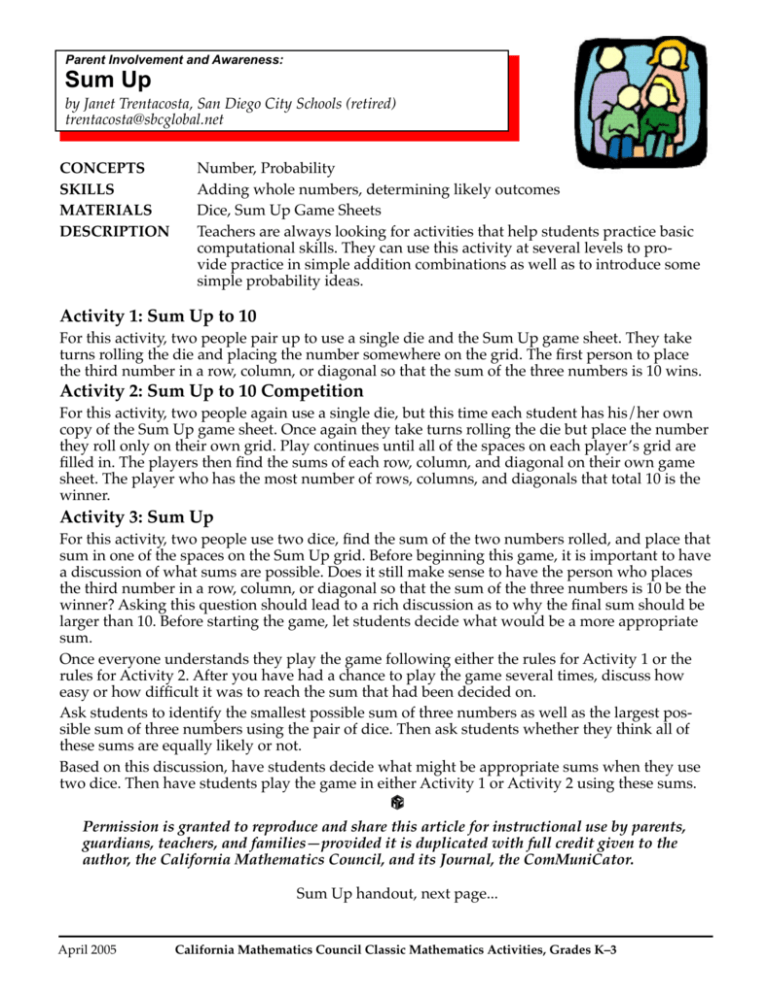
Parent Involvement and Awareness: Sum Up by Janet Trentacosta, San Diego City Schools (retired) trentacosta@sbcglobal.net CONCEPTS SKILLS MATERIALS DESCRIPTION Number, Probability Adding whole numbers, determining likely outcomes Dice, Sum Up Game Sheets Teachers are always looking for activities that help students practice basic computational skills. They can use this activity at several levels to provide practice in simple addition combinations as well as to introduce some simple probability ideas. Activity 1: Sum Up to 10 For this activity, two people pair up to use a single die and the Sum Up game sheet. They take turns rolling the die and placing the number somewhere on the grid. The first person to place the third number in a row, column, or diagonal so that the sum of the three numbers is 10 wins. Activity 2: Sum Up to 10 Competition For this activity, two people again use a single die, but this time each student has his/her own copy of the Sum Up game sheet. Once again they take turns rolling the die but place the number they roll only on their own grid. Play continues until all of the spaces on each player’s grid are filled in. The players then find the sums of each row, column, and diagonal on their own game sheet. The player who has the most number of rows, columns, and diagonals that total 10 is the winner. Activity 3: Sum Up For this activity, two people use two dice, find the sum of the two numbers rolled, and place that sum in one of the spaces on the Sum Up grid. Before beginning this game, it is important to have a discussion of what sums are possible. Does it still make sense to have the person who places the third number in a row, column, or diagonal so that the sum of the three numbers is 10 be the winner? Asking this question should lead to a rich discussion as to why the final sum should be larger than 10. Before starting the game, let students decide what would be a more appropriate sum. Once everyone understands they play the game following either the rules for Activity 1 or the rules for Activity 2. After you have had a chance to play the game several times, discuss how easy or how difficult it was to reach the sum that had been decided on. Ask students to identify the smallest possible sum of three numbers as well as the largest possible sum of three numbers using the pair of dice. Then ask students whether they think all of these sums are equally likely or not. Based on this discussion, have students decide what might be appropriate sums when they use two dice. Then have students play the game in either Activity 1 or Activity 2 using these sums. Permission is granted to reproduce and share this article for instructional use by parents, guardians, teachers, and families—provided it is duplicated with full credit given to the author, the California Mathematics Council, and its Journal, the ComMuniCator. Sum Up handout, next page... April 2005 California Mathematics Council Classic Mathematics Activities, Grades K–3 1 2 3 Sum Up by Janet Trentacosta 4 SUM UP SUM UP SUM UP SUM UP 5 California Mathematics Council Classic Mathematics Activities, Grades K–3 6 April 2005
